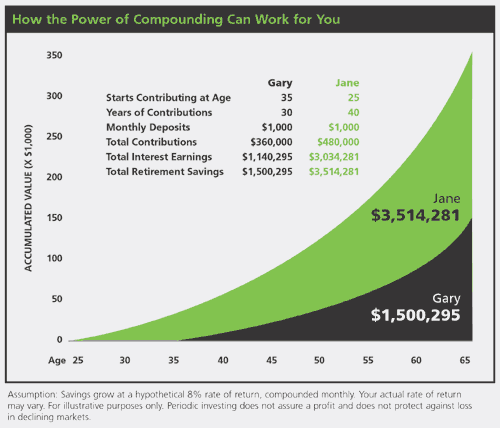“Compound interest is the eighth wonder of the world. He who understands it, earns it ... he who doesn't ... pays it.” ― Albert Einstein
In the book, “Once Upon a Wall Street”, Peter Lynch, one of the most successful mutual fund managers the Wall Street has ever seen, narrates a story. “Consider the Indians of Manhattan, who in 1625 sold all their real estate to a group of immigrants for $24 in trinkets and beads. For 362 years the Indians have been the subjects of cruel jokes because of it – but it turns out that they may have made a better deal than the buyers who got the island. At 8% interest on $24 ( note: let’s suspend our disbelief and assume they converted the trinkets to cash) compounded over all those years, the Indians would have built up a net worth just short $30 trillion, while the latest tax records from the Borough of Manhattan show the real estate to be worth only $28.1 billion. Give Manhattan the benefit of doubt: That $28.1 billion is the assessed value, and for all anybody knows, it may be worth twice that on the open market. So Manhattan’s worth $56.2 billion. Either way, the Indians could be ahead by $29 trillion and change.
This little story shows you the power of compounding and the points out the fact that the earlier you start investing the better it gets.

Illustration
Let’s try and understand this through an example of two friends, Ram and Shyam. Both start working at the same time at the age of 23. Ram starts saving when he turns 25 and invests Rs 50,000 every year. Assuming that on this he earns a return of 10% every year, at the end of ten years, Ram would be able to accumulate Rs 8.77 lakh. After this, due to financial constraints Ram is not able to invest any more money. But at the same time he does not touch the fund that he has already accumulated, hoping to live of it when he retires.
He lets the Rs 8.77 lakh grow and assuming that it continues to earn a return of 10% p.a., he would be able to accumulate around Rs 95 lakh by the time he turns 60. So the Rs 5 lakh (Rs 50,000 x 10 years) he had invested in the first ten years of his working life would have grown to Rs 95 lakh. This even though he stopped investing entirely after the first ten years.
Now let’s take the case of Shyam. Shyam believed in enjoying life, spending freely rather than saving regularly. However, at the age of 35 as reality dawns, he starts putting aside Rs 50,000 every year. Unlike his friend Ram, who stopped after the first ten years, Shyam religiously invests the amount each year for all of next twenty five years i.e. till he turns 60. Now, assuming he also earns a return of 10% per year on his investments, in the end, Shyam would have managed to accumulate Rs 54.10 lakh.
Putting it differently, even after investing Rs 50,000 regularly for twenty five years, Shyam has managed to accumulate Rs. 41 lakh lesser in comparison to Ram. Remember Ram has ended up investing only Rs 5 lakh in total over the ten years that he invested. In comparison, Shyam over the twenty five years invested Rs 12.5 lakh (Rs 50,000 x 25 years). So even by saving two and half times more than Ram, Shyam has managed to build a corpus which is 43% lower! This happened because Ram started investing earlier which in turn allowed the money to compound for a greater period of time.
Also as the corpus grows, the impact of compounding is greater. Ram as we know had managed to accumulate Rs 8.77 lakh after ten years after which he stopped investing, allowing the accumulated corpus to compound for twenty years more. In other words, the total life of the investment was for thirty years. However, had his investment time frame been till he turned 55 i.e. had the money compounded for twenty five years instead of thirty then at the end Ram would have accumulated a corpus of around Rs 59 lakh. By choosing to let his investment run for just an additional five years, Ram managed to accumulate Rs 45 lakh more.
Real Life Illustration
In terms of a practical example, let’s take the case of HDFC Equity Fund. The five year return of this fund is around 9.31% p.a. On the other hand, from inception (December 1994), the fund has returned 20.2% p.a. Now, had an investor invested say Rs. 50,000 five years back, the investment would have grown to around Rs. 78,000. However, had the investment been made at inception (allowing the money to compound over a greater period of time) the investment would have grown over 24 times to around Rs. 12 lakh.
As mentioned in the beginning of the column, Albert Einstein himself has called the power of compounding the eighth wonder of the world. In this article we have given various examples of how potent this power is when combined with its ally --- Father Time. It’s never too early nor too late to begin investing. Or to put it differently, better late than later.

No comments:
Post a Comment